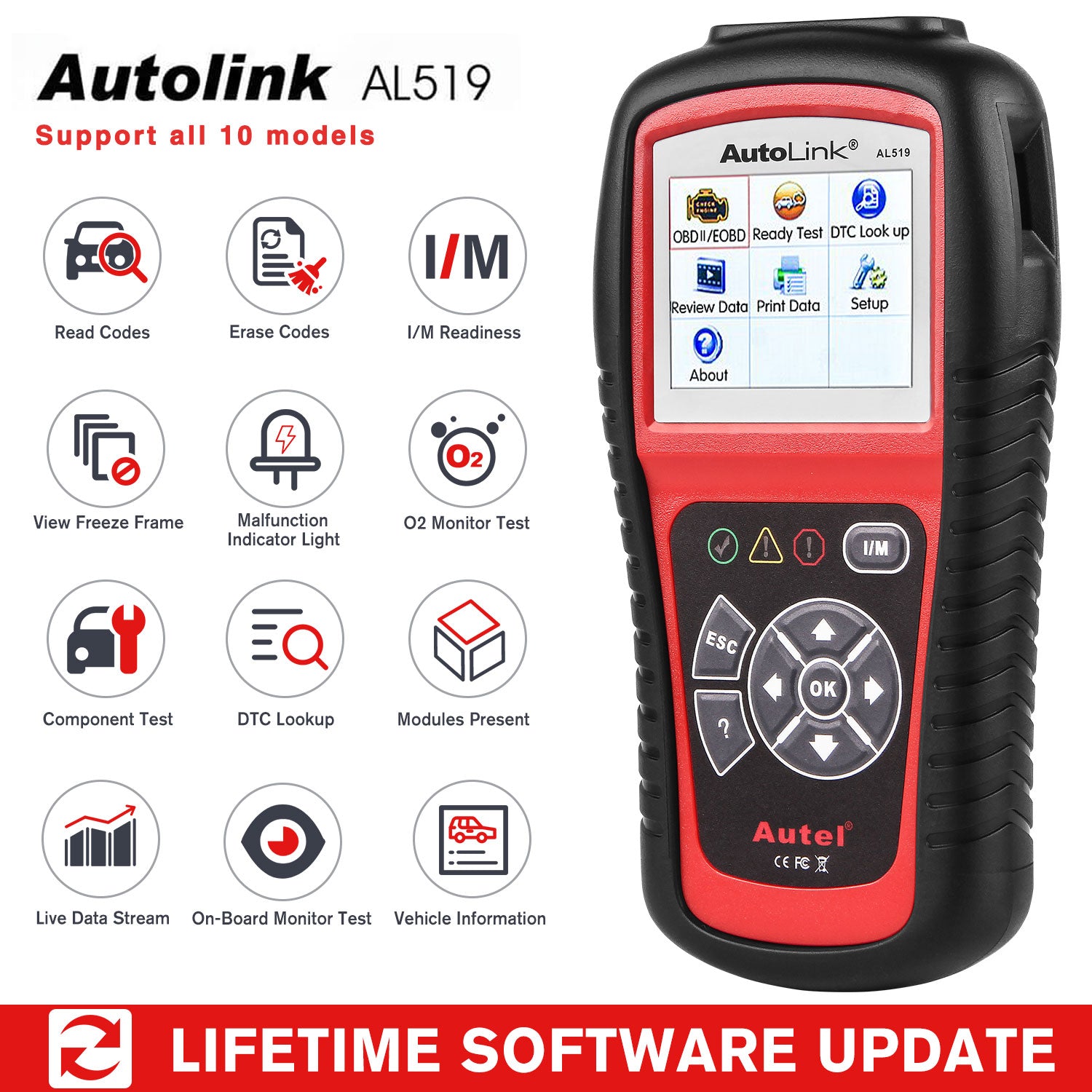Faster Delivery in 3-5 Days
Faster Delivery in 3-5 Days

When it comes to OBD2 diagnostics, most drivers are only familiar with reading and clearing codes. However, the OBD2 system offers 10 standardized modes, and among them, OBD2 Mode 6 is one of the most powerful scan tools for identifying problems before they trigger any warning light.
Let's dive into what OBD2 Mode 6 is, how it works within the 10-mode framework, and how Autel scanners—including the Autel MK808S, AL519, and the Autel MaxiSys Ultra — can help you take full advantage of it.
Here's a simplified overview of the 10 OBD2 modes:
| Mode | Function |
| 01 | Live date from sensors |
| 02 | Freeze frame when a fault occurs |
| 03 | Stored diagnostic trouble codes (DTCs) |
| 04 | Clear DTCs and freeze frames |
| 05 | Oxygen sensor test results (legacy) |
| 06 | On-board monitoring of specific components |
| 07 | Pending trouble codes |
| 08 | Active control of components |
| 09 | Vehicle information like VIN |
| 10 | Permanent DTCs |
Among these, OBD2 Mode 6 stands out because it provides test results from non-continuous monitors such as the EVAP system, catalytic converter, or EGR valve.
OBD2 Mode 6 displays raw test data from your car's ECU. These tests include pass/fail results for specific components that aren't constantly monitored but are crucial for emissions performance.
Unlike Mode 3 (which only shows error codes after a failure), Mode 6 lets you catch potential issues early. It's especially useful for professionals and advanced DIYers who want to diagnose problems before they escalate.
With a good scanner-like the Autel MK808S, Autel AL519, or Autel Ultra-you can translate Mode 6 data into real-world insight without needing to decode hexadecimal strings manually.

Mode 6 helps analyze emission system data, diagnose issues, and understand scan data limits.
Here's why OBD2 Mode 6 matters:
Even an entry-level tool like the Autel AL519 supports Enhanced OBD2 Mode 6 and presents simplified results, while advanced models like the MK808S and Autel Ultra provide full breakdowns and graphs.
All three of these Autel scanners give you access to Mode 6, though with different levels of depth:

The Autel AL519 supports all 10 OBD2 modes.
1. Connect the scanner to the OBD2 port.
2. Choose the Mode 6 menu.
3. Review component test results.
4. Look for values outside the acceptable limits or marked as “Fail”.
Mode 6 isn't just for experts—it's useful anytime you want to:
Instead of waiting for the engine light, OBD2 Mode 6 lets you act early-and Autel tools make this possible even at entry-level.
OBD2 Mode 6 helps detect exhaust issues early for easier emissions test approval.
Understanding and utilizing OBD2 Mode 6 can elevate your diagnostic process. Whether you're a weekend DIYer or a professional technician, having access to Mode 6 means you can detect issues before they become expensive problems.
With Autel's trusted lineup—from the budget-friendly AL519, to the versatile MK808S, and the powerhouse Ultra—you have everything you need to make OBD2 Mode 6 work for you.
Leave a comment